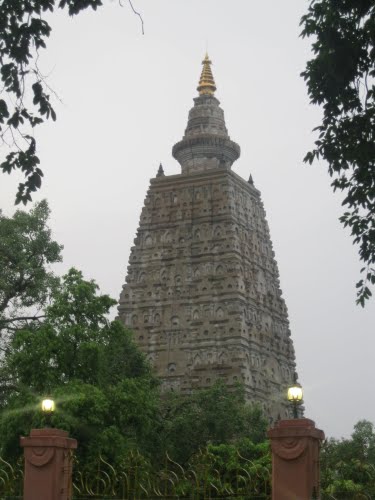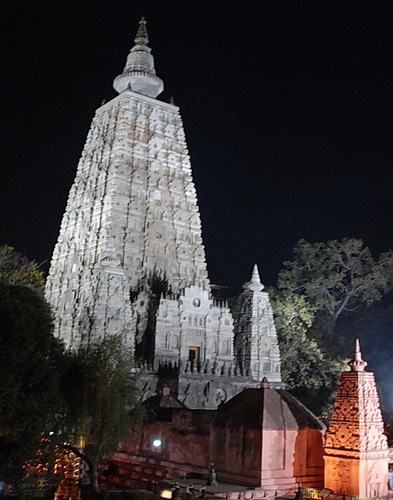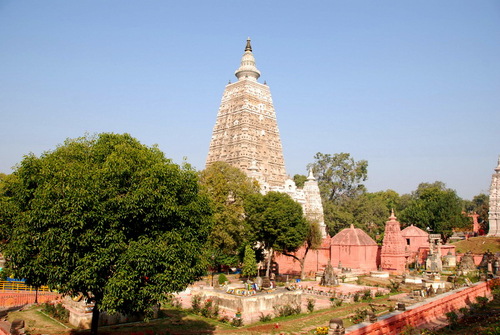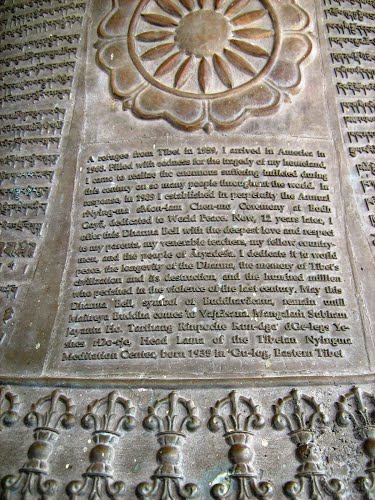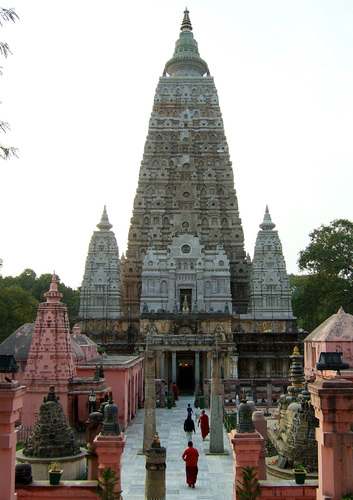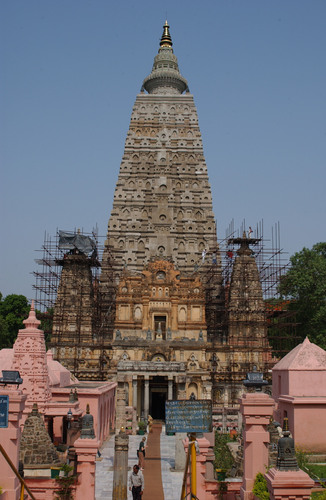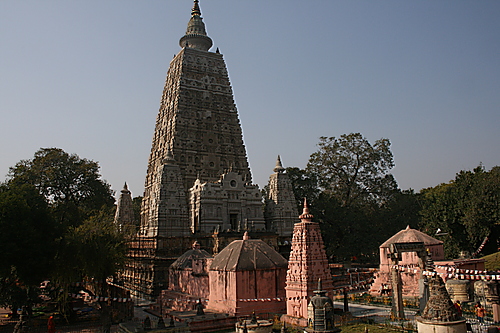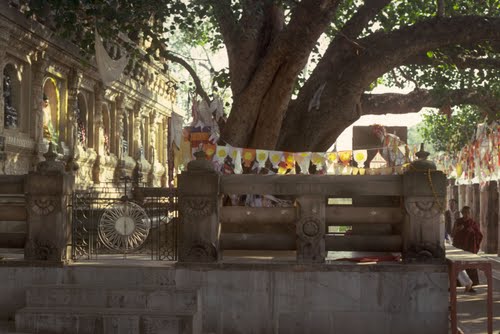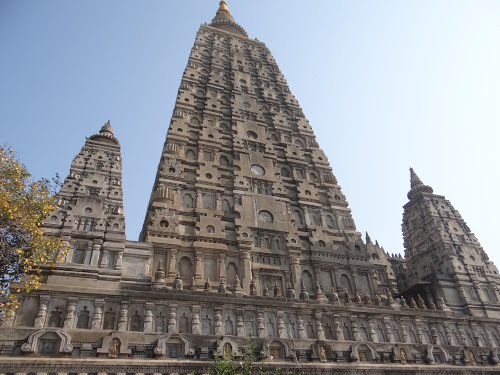The Mahabodhi Vihar, a UNESCO World Heritage Site, is a Buddhist temple in Bodh Gaya, marking the location where the Buddha is said to have attained enlightenment. Bodh Gaya (located in Gaya district) is located about 96 km from Patna, Bihar state, India.
Images of the site include Avalokitesvara (Padmapani, Khasarpana), Vajrapani, Tara, Marichi, Yamantaka, Jambhala and Vajravarahi. Images of Vishnu, Shiva, Surya and other Vedic deities are also associated with the site.
The site contains a descendant of the Bodhi Tree under which Buddha gained enlightenment.
Bodhi Tree
The Bodhi tree at Bodhgaya is directly connected to the life of the historical Buddha, Siddhartha Gautama, who attained enlightenment or perfect insight when he was meditating under it. The temple was built directly to the east of the Bodhi tree which is supposed to be a direct descendant of the original Bodhi Tree.
According to Buddhist mythology, if no Bodhi tree grows at the site, the ground around the Bodhi tree is devoid of all plants for a distance of one royal karisa. Through the ground around the Bodhi tree no being, not even an elephant, can travel.
According to the Jatakas, the navel of the earth lies at this spot, and no other place can support the weight of the Buddha's attainment. Another Buddhist tradition claims that when the world is destroyed at the end of a kalpa, the Bodhimanda is the last spot to disappear, and will be the first to appear when the world emerges into existence again. Tradition also claims that a lotus will bloom there, and if a Buddha is born during that the new kalpa, the lotus flowers in accordance with the number of Buddhas expected to arise. According to legend, in the case of Gautama Buddha, a Bodhi tree sprang up on the day he was born.

